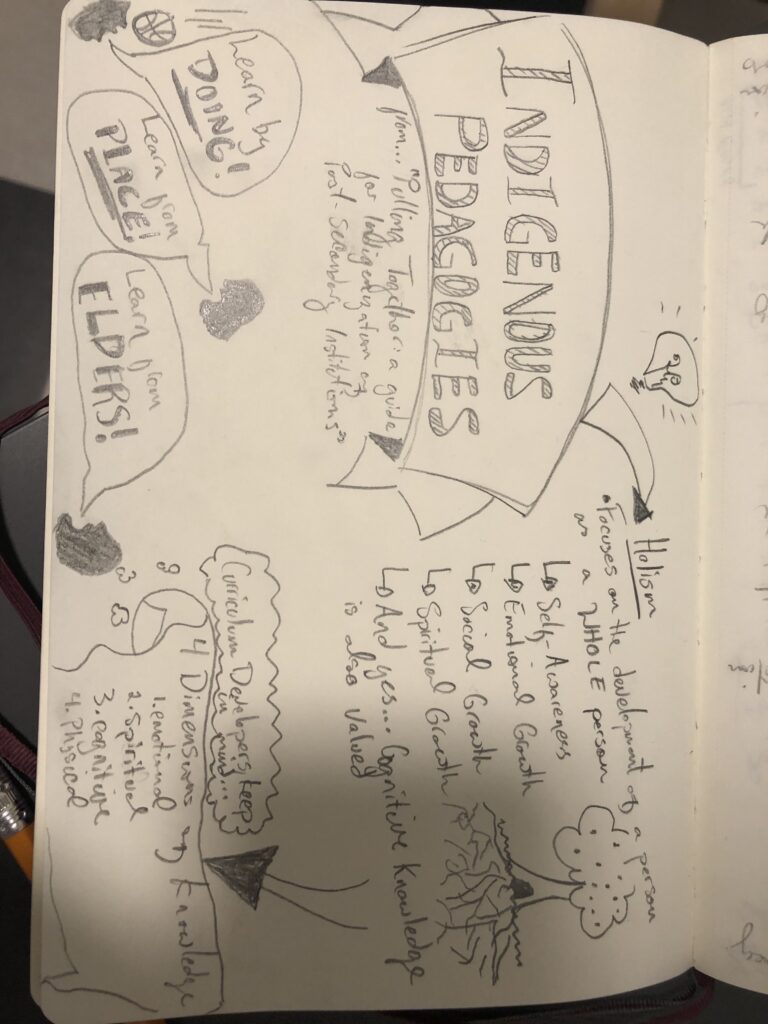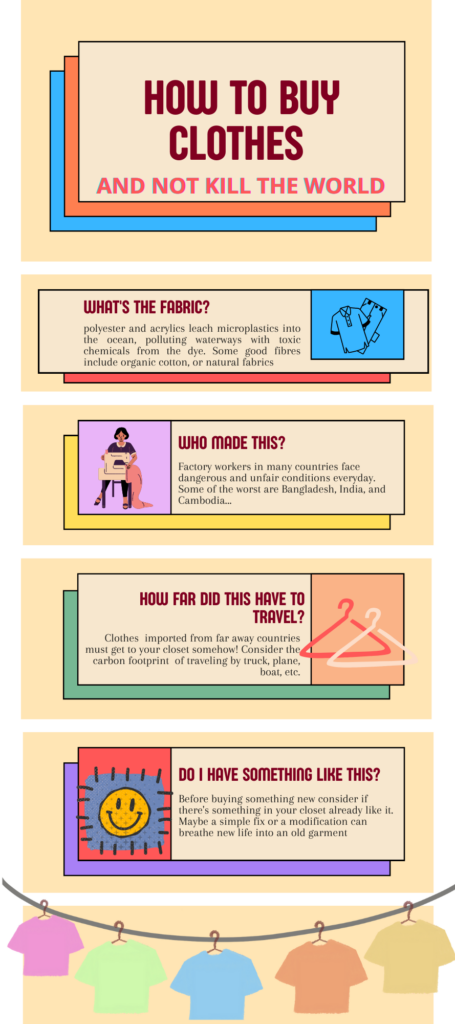This week we learned about sketchnoting and the SAMR theory of technology adoption. While I enjoy writing on my laptop I always prefer a pencil and notebook when I’m taking notes during a lecture or event. Due to the inability to pace my pen with the spoken word, notetaking by hand requires me to paraphrase, which, as we alluded briefly to in class, may result in a deeper processing of the information. In any case, I find that when I take notes on a laptop I’m often scrambling to get every word down, without really taking any of them in. Also, when taking notes by hand I’m often doodling, illustrating connections by an improvised system of symbols that I’m able to decode only in the particular context of the content and form of that single page.
Below is an example of some sketchnoting strategies we worked on in class.

As a teacher I will certainly encourage sketchnoting to my students. Not only does the science back it up, but I think the personalized aspect of sketchnoting gives students the opportunity to make the learning material their own, through drawings, cartoons, etc.
Besides Sketchnoting, we also discussed SAMR–a theory of technology adoption, which stands for “Substitution, Augmentation, Modification, and Redefinition.” This is a helpful theory that can help assess to what degree a technology a truly innovating, or if a technology is simply substituting an existing technology, but with a little more speed or a little more accuracy. Before adopting a new technology, we may ask, “Will this allow for any significant task redesign?” If so, the tech would fall into the Modification category, opening up areas for growth and new opportunities for learning. Better yet, if a technology allows for the creation of new tasks previously inaccessible, it would fall under the Redefinition category, and might be worth considering. However, if a technology is a direct substitute for an existing tool with no significant functional change, it’s probably not worth the time or money. It is also worth considering the resources it takes to produce modern technologies. For example, cobalt is an essential metal in most electronic devices and batteries that power our world, yet the conditions under which most of it is mined are horrifying, involving human trafficking and subhuman working conditions, which has recently been brought to light by Siddharth Kara’s new book Cobalt Red: How the Blood of the Congo Powers our Lives. I love the creation of new tasks and opportunities! but as a teacher I will do what I can to inspire and motivate without becoming dependent on more tech than is necessary.
Below is my Canva infographic.

Comments
Hi Clayton 🙂
I think your comment about cobalt mining is a great point and one that we haven’t really discussed yet in the class. We often forget, or perhaps willfully ignore the environmental and socio-political repercussions of technology production and electronic waste. Most if not all of our tech consumption is at the expense of folks who are being exploited in terrible working conditions. Additionally, as a global community we really don’t have the infrastructure to handle the amount of waste that is produced by technological advances.
Within the same realm, I appreciated your infographic on sustainable shopping practices. This is something I am thinking about a lot so I enjoyed your tips!
One suggestion I have would be adding some alt text to your embedded photos so they are a bit more accessible to folks who use text to audio. (I’m sorry if you already have it in place, I tried to find it but I could not 🙂 )
– Allie